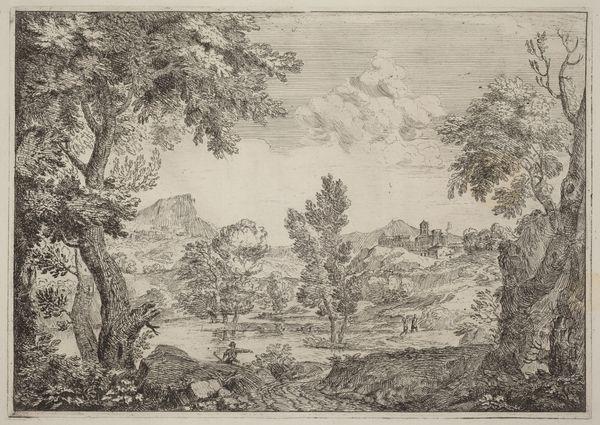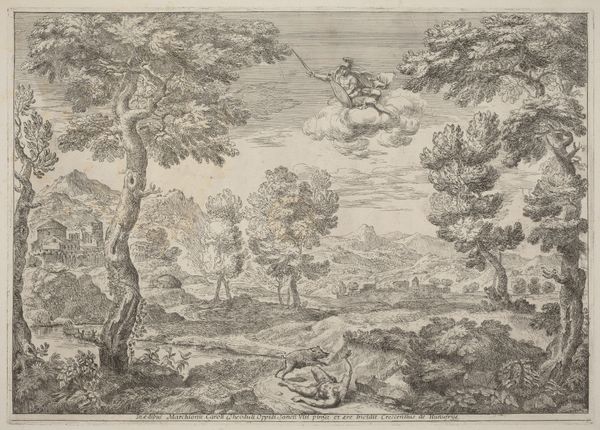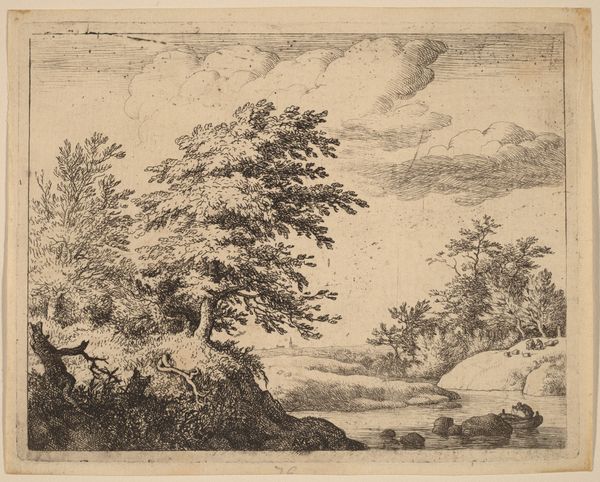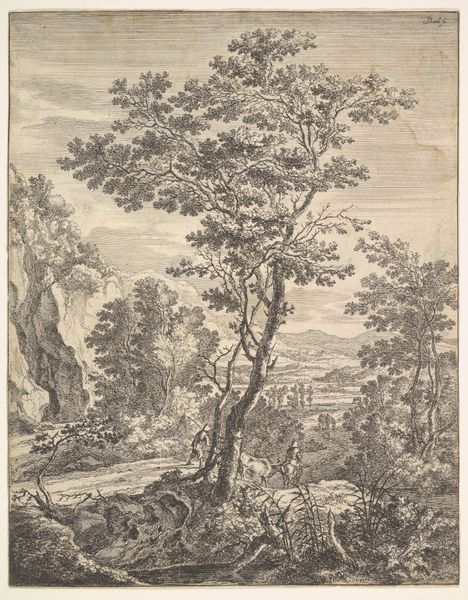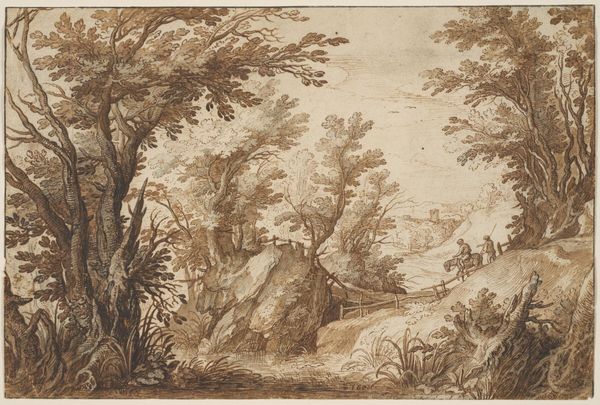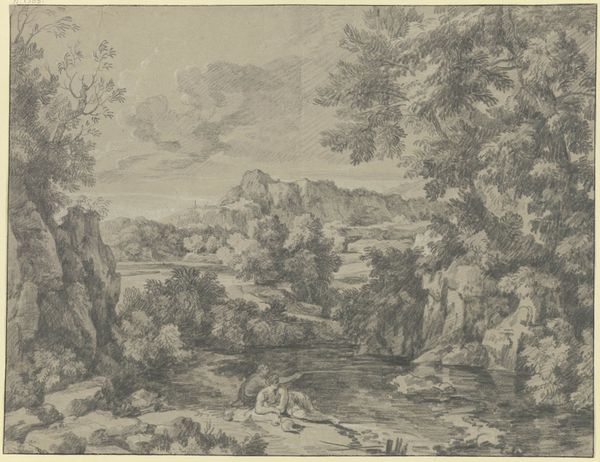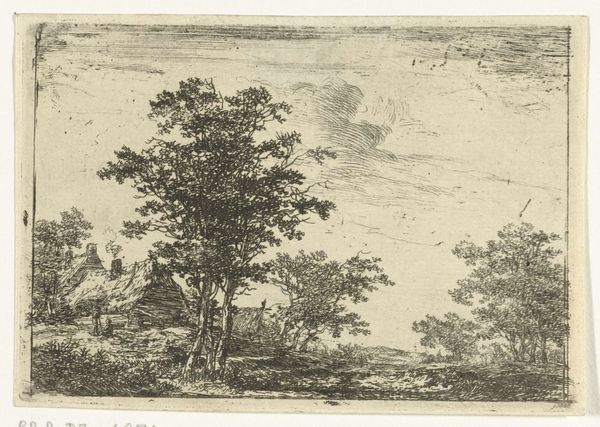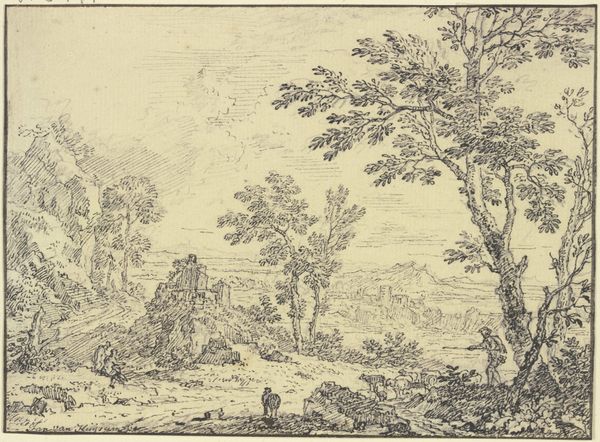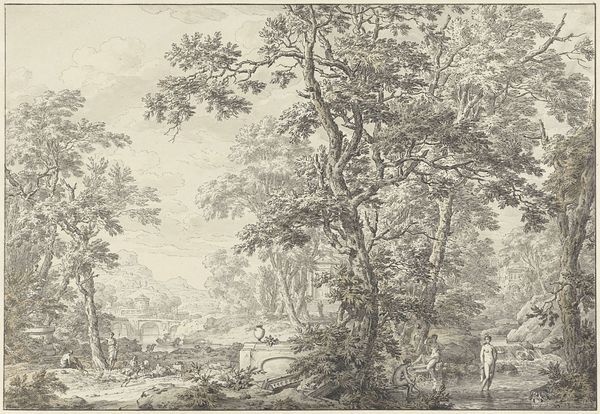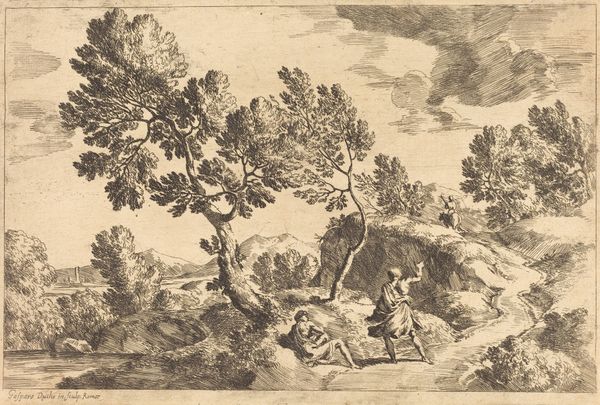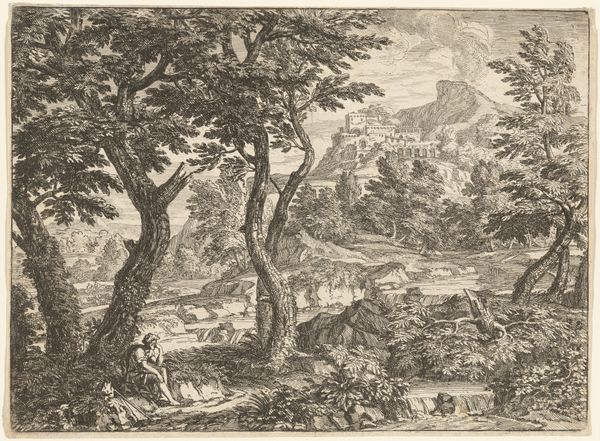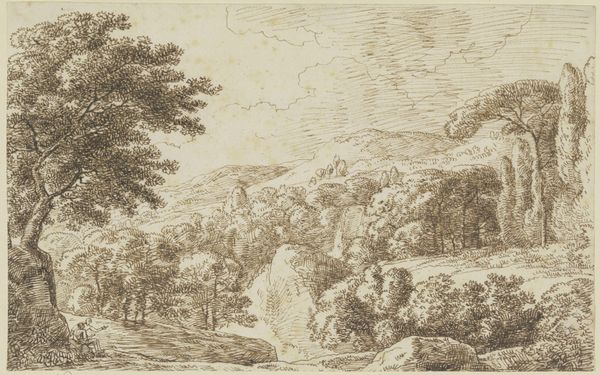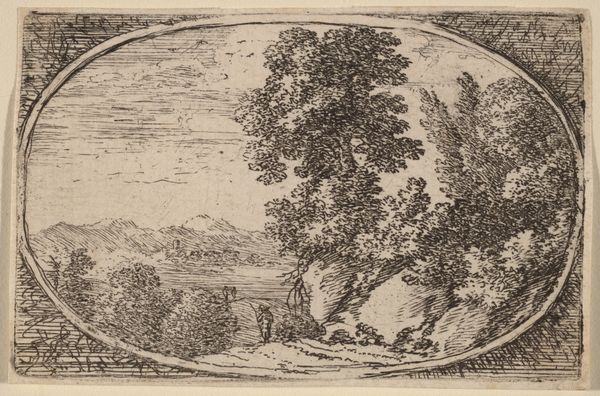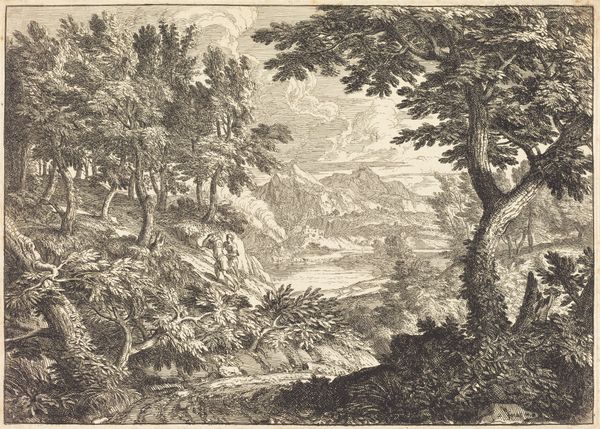
Landscape; a small island with two trees surrounded by water on the left; a tree by a cottage on the right 1788 - 1798
0:00
0:00
drawing, print, etching
#
drawing
# print
#
etching
#
landscape
#
form
#
romanticism
#
line
#
realism
Dimensions: Sheet: 8 9/16 × 13 1/16 in. (21.8 × 33.2 cm) Overall: 11 3/8 × 15 3/16 in. (28.9 × 38.6 cm)
Copyright: Public Domain
Carl Wilhelm Kolbe made this landscape using etching, a printmaking technique where lines are incised into a metal plate with acid, then inked and printed. The density of the etched lines gives form to trees, water, and sky, reflecting the artist's skill and control over this process. The etching technique allowed Kolbe to produce multiple impressions of the same image. This was particularly valuable at a time when images were essential for communication. The texture created through etching gives the landscape a tactile quality, almost as if one could feel the rough bark of the trees or the gentle flow of the water. Kolbe's choice of etching as a medium speaks to the broader social context of art production in the late 18th and early 19th centuries. Printmaking enabled wider access to art, moving beyond unique, precious objects to more democratic forms of distribution. By focusing on the materiality and the means of production of this landscape, we understand better its place in cultural history.
Comments
No comments
Be the first to comment and join the conversation on the ultimate creative platform.
